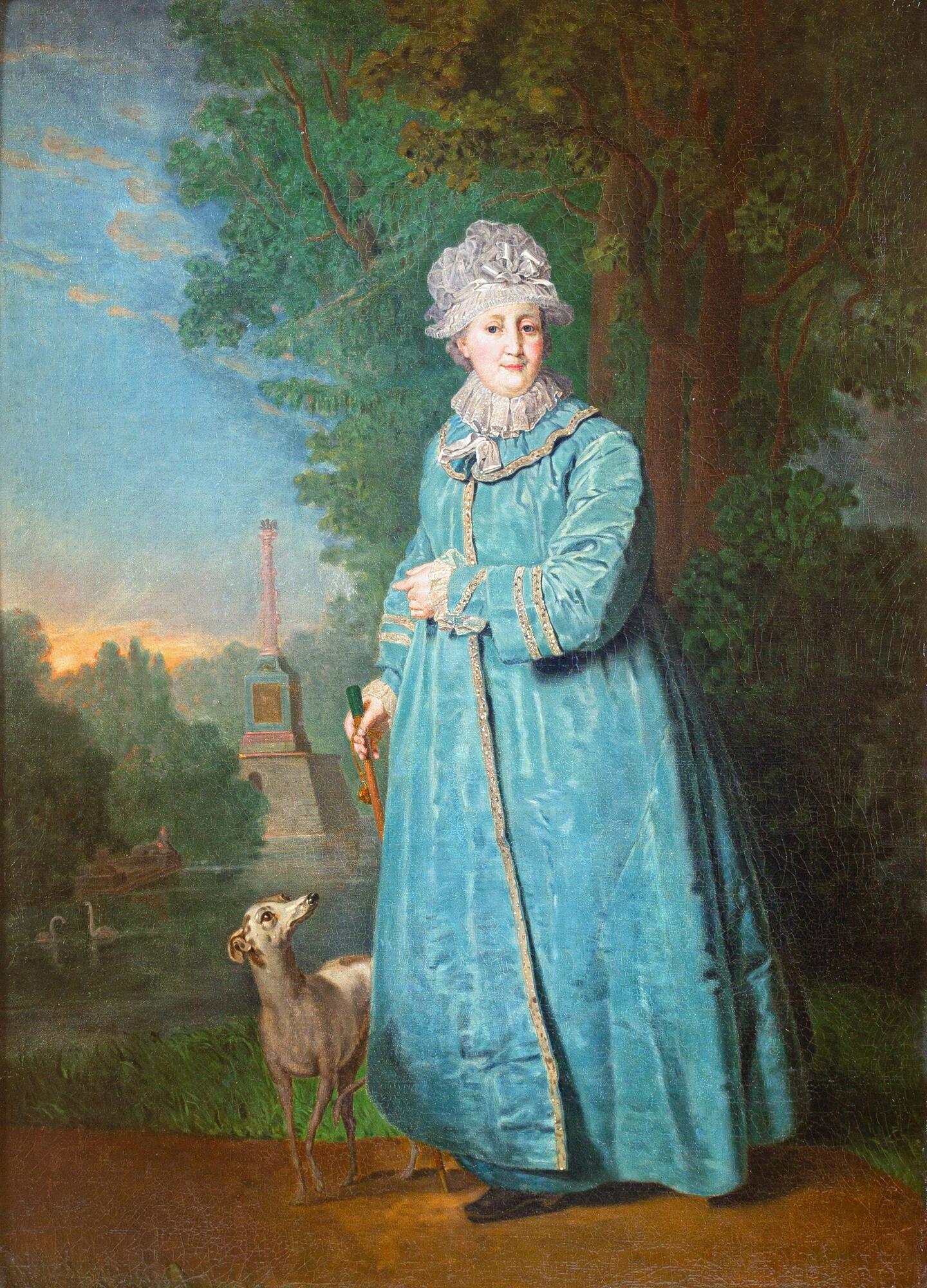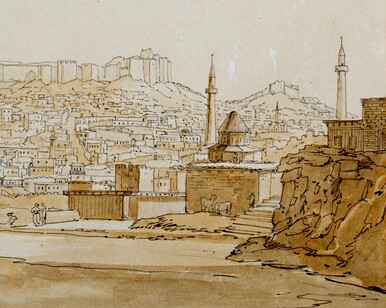The National Pushkin Museum houses a portrait of Catherine II by an unknown artist. The empress leisurely and casually strolls through the picturesque English park of Tsarskoe Selo, accompanied by her beloved dog, as a simple woman who is not burdened with power.
The 18th century was the heyday of Russian culture. One could offer a long list of the fruits of enlightenment — the result of Catherine’s reign, the monarch who appreciated culture and art. She was praised by artists and poets. There were two main genre trends in depicting the empress — an idealized ceremonial portrait and a chamber image presenting an earthly woman with her habits and hobbies. Gavriil Romanovich Derzhavin dedicated the works “Vision of Murza”, “Ode to Felicia” and “Portrait of Felicia” to Catherine II, portraying her as a “goddess”, an “angel”, and “crowned virtue”.
Tsarskoe Selo had a special significance in the life and work of Pushkin. His first published poem “Memories in Tsarskoe Selo” was written at the suggestion of Alexander Ivanovich Galich, a teacher of Latin and Russian literature, for reading at a public exam during the transition from the junior year of the Tsarskoe Selo Lyceum to the senior one. It praises the heroic victories of Russia in the “vociferous age of military quarrels”, turning into a narrative about the events of 1812, which was consonant with Derzhavin’s style. The birth of Pushkin’s poetic talent is connected with the Lyceum. In January 1815, at the transitional examination, Pushkin’s poems were noticed by Gavriil Derzhavin.
The small garden surrounding the Lyceum building and the Church of Our Lady of the Sign was reserved for the students. They would walk and play games there. But in the summer, they had the entire Catherine Park at their disposal: on a large green meadow called the pink field, the students played ball and lapta (a traditional bat and ball game). The park was famous for its sculptures, monuments, and pavilions. The Kagul Obelisk and the Morea Column were not only garden decorations, but also monuments of Russian military glory. In 1831, Pushkin brought his young wife to Tsarskoe Selo: arriving from Moscow in May, the Pushkins stayed until October in a wooden house that belonged to Anna Kitaeva, the widow of a court valet. The house was a short walk from the Lyceum and Catherine Park.
Alexander Pushkin was inspired by the image of “our
Mother, the Empress” and reflected it in the story “The Captain’s Daughter”.


